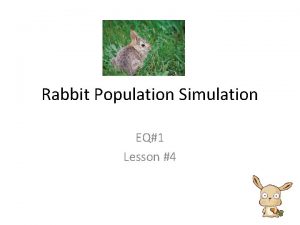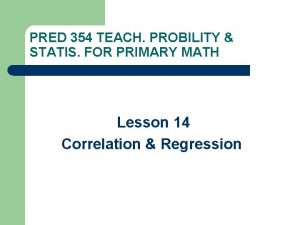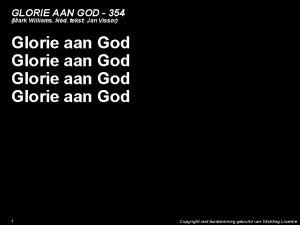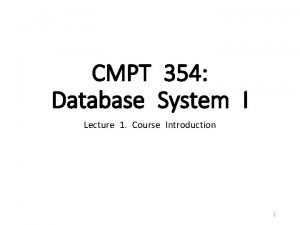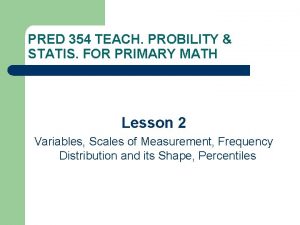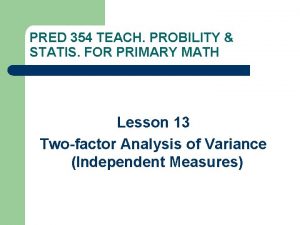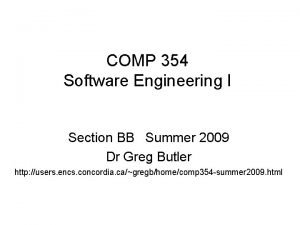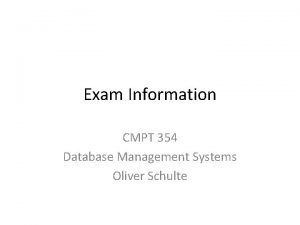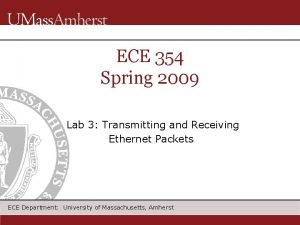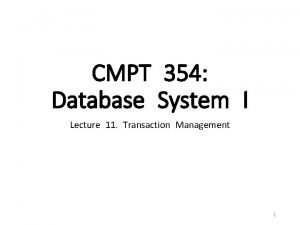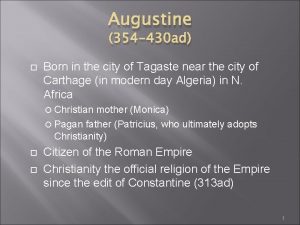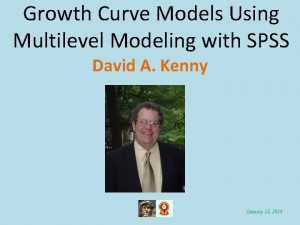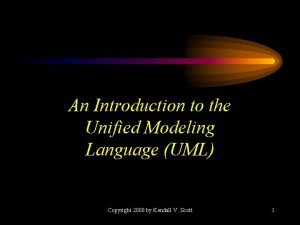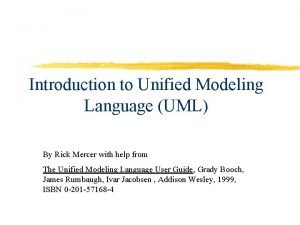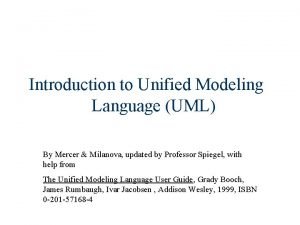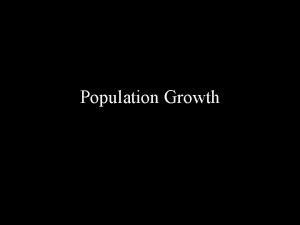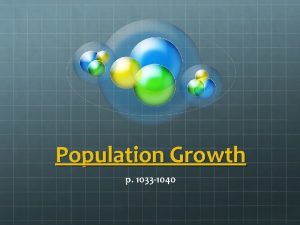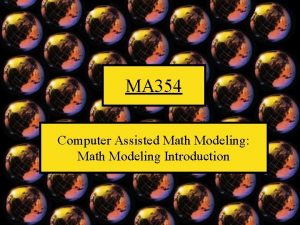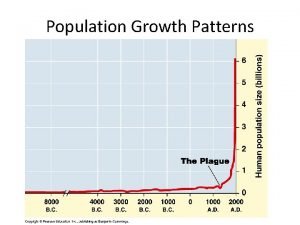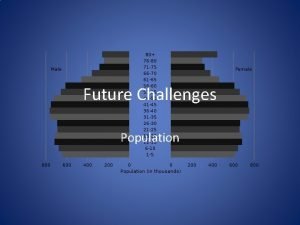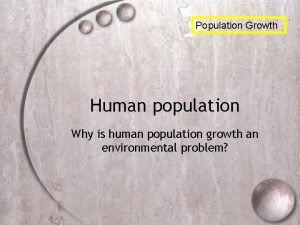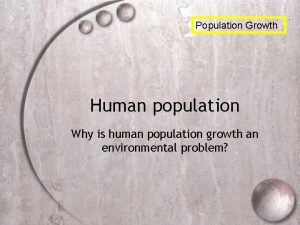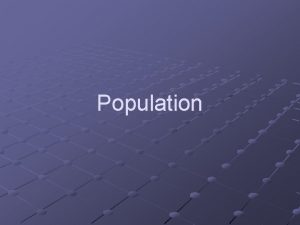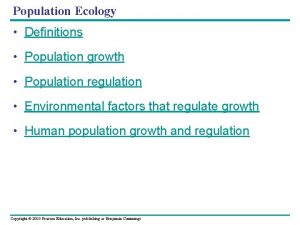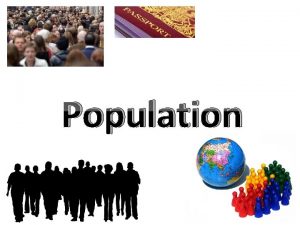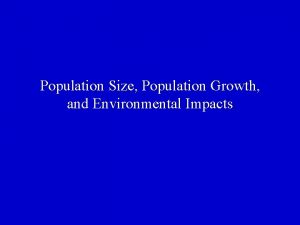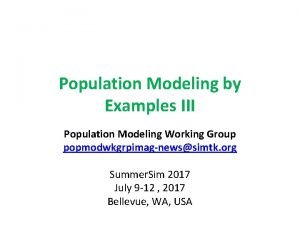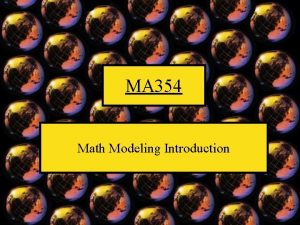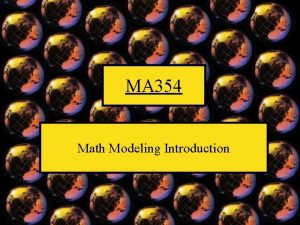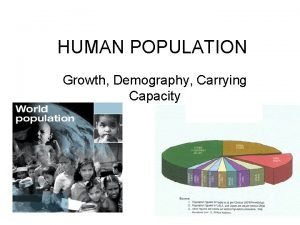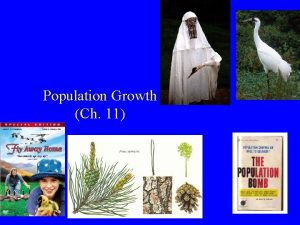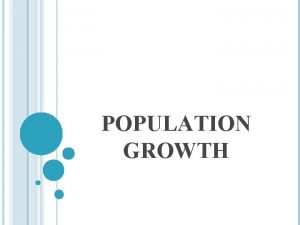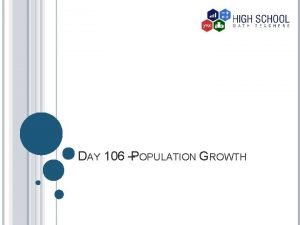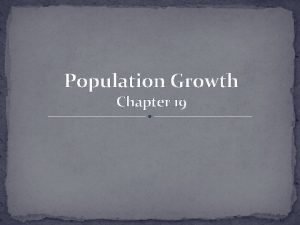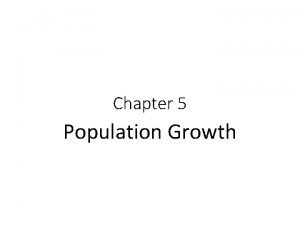MA 354 Modeling Population Growth Introduction to Growth





























- Slides: 29

MA 354 Modeling Population Growth Introduction to Growth Models Conservation Equation

A Population • Let N(t) be the size of a population at time t. • By population, we could mean – The number of bacteria dividing in a petri-dish. – The number of rabbits in a predator-prey model. – The number of redwoods in a forest periodically ravaged by fire. – The number of people infected with an infectious disease. • With some semantical gymnastics, we might also mean the size of a growing organism. (e. g. , total cell population roughly proportional to size)

Model 1: Very Simple Linear Growth Leaf Production By a Growing Plant • Initially, there are no leaves on the plant. • Every day, the plant grows a new leaf. • Let N(t) be the population of leaves.

Model 1: Very Simple Linear Growth Leaf Production By a Growing Plant • Initially, there are no leaves on the plant. • Every day, the plant grows a new leaf. • Let N(t) be the population of leaves. ith . w up ples. e om xam c y to wth e s a y e ar gro r e v e Not ral lin u nat

Model 2: Simple Exponential Growth: Bacteria Dividing in a Petri Dish • Initially, there is just one bacterial cell. • When the cell divides, it splits into two identical daughter cells. • The cell(s) divide every two hours.

Models for Population Growth • Very generally, N = (increases in the population) – (decreases in the population) • Classically, N = births – deaths ± migration “Conservation Equation”

Models for Population Growth • • N = births – deaths (for simplicity) Models differ in how they describe births and deaths – – If birth and death is independent of the population size, then growth will be linear. If birth and death depend upon the population size: • • If birth and death depends proportionally upon the population size, growth will be exponential. If birth and death depends non-linearly upon the population size, then growth can be much more complex. (A common example is logistic growth. )

MA 354 Modeling Population Growth Introduction to Three Growth Models Growth Versus Growth Rate

MA 354 A Quick Overview of the 3 Models We’ll Be Looking At

Three Growth Models • Linear Growth • Exponential Growth • Logistic Growth

Three Growth Models • Linear Growth • Exponential Growth • Logistic Growth

Three Growth Models • Linear Growth • Exponential Growth • Logistic Growth

Linear versus Exponential • Emphasis on difference in shape, not magnitude

Linear versus Exponential • Emphasis on difference in shape, not magnitude

Linear versus Exponential • Emphasis on difference in shape, not magnitude

Exponential versus Logistic

Logistic Growth

Growth versus Growth Rate As we study these three models over the next week, focus on how they have different descriptions for their “growth” and “growth rate”.


Heads up… At the end of this book section (1. 2), you’ll need to complete this table:

MA 354 Modeling Population Growth Linear and Non-Linear Growth Models

MA 354 Linear Growth Models

Linear Growth Models

Linear Growth Models Have very simple descriptions. Implicit description Explicit description Difference Equation

Linear Growth Models Have very simple descriptions. Example Implicit description Explicit description Difference Equation General

Linear Growth Models Have very simple descriptions. Example Implicit description Explicit description Difference Equation General

Linear Growth Models Growth and growth rate:

Linear Growth Models •

In-Class Project: Build a Flexible Linear Model •
 Modeling population growth rabbits answer key
Modeling population growth rabbits answer key Role modeling theory
Role modeling theory Dimensional modeling vs relational modeling
Dimensional modeling vs relational modeling Chapter 4 population ecology answer key
Chapter 4 population ecology answer key Section 1 population dynamics answer key
Section 1 population dynamics answer key Population ecology section 1 population dynamics
Population ecology section 1 population dynamics Chapter 4 population ecology section 1 population dynamics
Chapter 4 population ecology section 1 population dynamics Informe técnico 1466-2017-servir-gpgsc
Informe técnico 1466-2017-servir-gpgsc Informe técnico 1466-2017-servir-gpgsc
Informe técnico 1466-2017-servir-gpgsc Time bound promotion
Time bound promotion Pred354
Pred354 Glorie aan god tekst
Glorie aan god tekst Piazza sfu
Piazza sfu Opwekking 354
Opwekking 354 430
430 Pred-354
Pred-354 Math pred
Math pred Comp 354
Comp 354 Art 354 kc
Art 354 kc Me 354
Me 354 Cmpt 354
Cmpt 354 Ece 354
Ece 354 Cmpt 354
Cmpt 354 Augustine 354-430 ad
Augustine 354-430 ad Growth curve modeling spss
Growth curve modeling spss Introduction to the unified modeling language
Introduction to the unified modeling language Introduction to modeling and simulation
Introduction to modeling and simulation Pengertian pemodelan dan simulasi
Pengertian pemodelan dan simulasi Introduction to unified modeling language
Introduction to unified modeling language Introduction to unified modeling language
Introduction to unified modeling language
